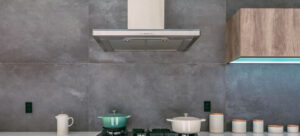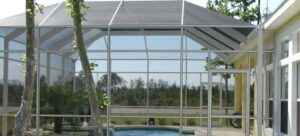When it comes to the final touches of your home’s interiors, the detail of window returns can significantly influence both the aesthetics and functionality of your living spaces. This choice often boils down to a prime debate: drywall window returns vs wood. Homeowners and builders alike are faced with determining the best window return material that not only complements their design vision but also meets their practical needs. Understanding the nuances in choosing between drywall and wood returns is essential for anyone looking to create a cohesive and well-designed home.
Key Takeaways
- Choosing the right window return material is crucial for both aesthetics and functionality.
- Drywall and wood are the two predominant materials for window returns, each with unique benefits.
- Durability, maintenance, and design preferences play pivotal roles in material selection.
- Understanding the advantages of drywall and wood will help in making an informed decision.
- Consideration of long-term costs and ease of installation is essential.
- Material choice should align with your overall home design and personal lifestyle needs.
An Overview of Window Return Materials
Window returns are an integral architectural feature, constituting the sides of a window frame that extend back to the wall. They quite literally ‘return’ to the wall, creating a complete, polished look of the aperture. Homeowners and builders deeply invested in interior detailing find themselves comparing window returns to enhance both the aesthetic appeal and practicality of their spaces. Two materials commonly stand out in this window return comparison: drywall and wood.
When it comes to optimal window return material, drywall is touted for its seamless integration with the wall, offering a clean and contemporary finish. Wood, on the other hand, boasts a traditional charm and warmth that can complement a variety of design schemes. The reasons for their preference are grounded in a balance of factors including aesthetics, durability, and cost-effectiveness. Below is a detailed comparison to elucidate their distinct characteristics:
| Feature | Drywall Returns | Wood Returns |
|---|---|---|
| Look & Feel | Sleek and modern | Classic and warm |
| Durability | Prone to dings, can be easily patched | Scratch resistant, but can be harder to repair |
| Installation | Quick and easy; can be DIY | Generally requires professional installation |
| Customization | Limited by thickness and width options | High customizability with different wood types and finishes |
| Maintenance | Simple cleaning; painting may be necessary over time | Requires periodic treatment for longevity |
| Cost | Cost-effective in standard applications | Can be more expensive, depending on wood species and craftsmanship |
This comparison should serve as a foundational reference for those in pursuit of the optimal window return material for their project. No matter the choice, recognizing the importance of materials in the finishing stages of window design plays a vital role in achieving the desired outcome for any living space.
Key Factors to Consider When Comparing Window Returns

Delving into the choice between drywall and wood window returns, it’s critical to analyze several core aspects that will ultimately guide your decision. We’ll examine each material’s durability and ease of maintenance, the ins and outs of installation and flexibility in design, how they each contribute to the room’s aesthetic, and the financial implications of both initial costs and ongoing expenses.
Durability and Maintenance
When contemplating durability and maintenance, drywall return benefits include its resistance to shrinkage and cracking over time, whereas wood return advantages lie in their robustness and ability to withstand environmental elements, making them particularly suited for historical renovations or rustic decors. Yet, wood may require more maintenance due to its propensity to warp or rot, necessitating treatments or refinishing to maintain its beauty and integrity.
Installation and Customization
Regarding installation and customization, drywall returns are celebrated for their straightforward installation process and the ease with which they can be crafted to fit various window sizes. This adds to their popularity in modern construction. Wood, while requiring more skilled craftsmanship for perfect fitting, offers unparalleled customization options, from carvings to moldings, adding character and value to any property.
Aesthetic and Design Implications
The choice between drywall and wood also heavily leans on the aesthetic and design implications. Drywall offers a seamless and contemporary look that complements a minimalist or modern design. Conversely, wood brings warmth and a timeless elegance that can enhance both traditional and modern homes, allowing for versatile design adaptability.
Cost Analysis
In terms of cost analysis, we must consider both upfront installation costs and long-term maintenance expenses. The table below compares these financial aspects to provide a clearer picture:
| Material | Initial Cost | Maintenance Cost | Longevity |
|---|---|---|---|
| Drywall | Lower | Lower to moderate | Can be shorter without proper maintenance |
| Wood | Higher | Moderate to high | Longer lifespan with maintenance |
To conclude, evaluating the drywall return benefits and wood return advantages against factors such as durability and maintenance, installation and customization, aesthetic and design implications, and a thorough cost analysis will arm homeowners, builders, and designers with the necessary information to make the most informed choice for their window treatment needs.
Beneath the Surface: Benefits of Drywall Window Returns
When debating the merits of drywall vs wood returns, the distinctive advantages of drywall become increasingly apparent. Particularly suited to modern living spaces, drywall window returns offer a blend of aesthetics and functionality that can be more aligned with contemporary interior design trends. Here we delve into the compelling reasons why drywall could be the superior choice for your project.
- Seamless Integration: Drywall returns merge effortlessly with the wall, providing a sleek and unbroken line that is highly sought after in modern design. This seamless look is less readily achieved with wood returns.
- Paint-Friendly Surface: The smooth finish of drywall allows for simple painting, ensuring that any color scheme can be easily matched or updated when desired.
- Cost-Effectiveness: Comparatively more affordable than wood, drywall offers an economic advantage, particularly in larger projects or where budget constraints are prominent.
- Simplicity of Installation: Drywall is not only lightweight; it is also easier to cut and install, making it a practical choice for both professionals and DIY enthusiasts.
- Mold Resistance: Modern drywall materials can include mold-resistant properties, fostering healthier indoor air quality and reducing maintenance concerns.
Understanding these benefits can guide homeowners and builders through the decision-making process, ultimately ensuring that the chosen window return material aligns seamlessly with both their design ambitions and practical requirements.
| Consideration | Drywall Window Returns | Wood Window Returns |
|---|---|---|
| Design Adaptability | Highly adaptable, ideal for modern aesthetics | More traditional, suits classic designs |
| Initial Cost | Generally more cost-efficient | Can be more expensive depending on wood type |
| Installation Ease | Easy to install, less labor-intensive | Requires more precise craftsmanship |
| Maintenance | Low maintenance; easy to repaint | May require more upkeep and is prone to warping |
| Mold Resistance | Options available with mold-resistant properties | Susceptible to mold without proper treatment |
The Enduring Charm: Advantages of Wood Returns
When it comes to selecting the right materials for window returns, the advantages of wood returns resonate with those who value both traditional craftsmanship and versatility in design. Known for their timeless beauty, wood window returns offer a richness and depth that cannot be easily replicated by other materials. Let’s consider the distinctive benefits that make wood an enduring favorite for homeowners and designers alike.
Timeless Beauty and Versatility
Wood’s natural appeal lies in its timeless beauty and inherent versatility, which allows it to adapt seamlessly to a multitude of architectural styles—from the rustic charm of a log cabin to the sleek finesse of a contemporary loft. The warmth and organic texture of wood returns add character to a space and can be customized with stains, finishes, or paint to match the homeowner’s personal aesthetic. The table below showcases a comparative glance at how wood stands out in terms of beauty and versatility:
| Aspect | Advantages of Wood Returns |
|---|---|
| Visual Appeal | Provides a warm, inviting appearance with unique grain patterns |
| Customization | Can be easily stained, painted, or shaped to desired specifications |
| Design Compatibility | Complements both traditional and modern décor styles |
| Longevity | Ages gracefully, acquiring a distinguished patina over time |
Strength and Insulation Properties
Aside from its visual appeal, wood offers excellent strength and insulation properties. The natural fibers in wood provide a level of insulation that contributes to energy efficiency in the home. It’s also less prone to thermal bridging than other materials, helping to maintain a stable interior climate and reducing energy costs. Below is an informative outline of wood’s performance factors:
- Durability: The robust nature of wood withstands everyday use and can support substantial window treatments.
- Energy Efficiency: Acts as a natural insulator helping in temperature control and energy savings.
- Sound Insulation: Dense wood varieties can also muffle outside noise to some degree.
Retrofitting and Repair Considerations
Wood’s adaptability is most evident when considering retrofitting and repair considerations. A wood window return can be sanded down, filled, or reconstructed to address wear, or modified to fit updated window styles and sizes. This element is especially crucial for historic homes where preserving original features is desirable. It’s essential to note wood’s superior capacity for repair and tailoring, as shown in the comparison below:
| Factor | Wood Returns |
|---|---|
| Maintenance | Can be easily refinished or repaired extending their lifespan |
| Historical Integrity | Preferred in heritage renovations to maintain the original look |
| Custom Retrofitting | Favorably accepts modifications for fit and functionality updates |
In conclusion, wood window returns not only offer a timeless aesthetic but also come forward as a practical choice. Their strength, superior insulation, and repair-friendly nature make them a significant consideration for any homeowner looking to combine classic appeal with modern performance. As we’ve explored, wood window returns stand the test of time, not only in endurance and style but also in their capacity to evolve with the changing needs of a space.
Conclusion
As we navigate the various aspects of interior design, the decision on whether to choose drywall window returns or wood becomes pivotal. Through examining the key factors presented in this article—from aesthetics to cost effectiveness—we’ve illuminated the debate that homeowners and designers frequently encounter. Making the best choice for your home involves a balance of practical considerations with your desired ambiance and style.
Summing Up the Window Return Debate
Drywall window returns offer a sleek, modern finish with a seamless integration into your wall for a contemporary look, often at a lower cost and with easier installation. On the other hand, the innate warmth and rich texture of wood returns bring a timeless elegance that can be well worth the additional investment. Both materials have their unique durability and maintenance profiles, making it important to consider the long-term consequences of selecting one over the other.
Making the Best Choice for Your Home
The journey through drywall window returns vs wood has led us to a crossroad where personal preference meets functionality. Each homeowner’s situation is unique, and the optimal choice hinges on a thorough evaluation of the inherent properties of each material and the overarching goals for your living space. Whether it’s the streamlined efficiency of drywall or the classic charm of wood, the path you choose should align with your vision for your home as well as your practical needs. By pondering each aspect judiciously, you can ensure a decision that you’ll be content with for years to come.
FAQ
What are the main differences between drywall window returns and wood returns?
The main differences include the materials’ aesthetic appeal, durability, maintenance, cost, and the ease of installation and customization. Drywall offers a smooth and seamless look that can be painted to match any interior, while wood returns bring a classic, timeless charm and can be stained or painted for versatility.
How do I choose between drywall and wood for my window returns?
Choosing between drywall and wood depends on the style of your home, your budget, and your personal preferences regarding look and maintenance. Consider the overall design scheme of your space, whether you prefer the modern appeal of drywall or the traditional elegance of wood, as well as the time and money you are willing to invest in upkeep and installation.
What are some benefits of drywall window returns?
Drywall window returns are cost-effective, easy to install, and can be finished to create a clean, contemporary look. They are also adaptable to modern design preferences and can be easily painted to integrate with the rest of the wall for a seamless transition.
What advantages do wood window returns offer?
Wood window returns provide a warm, classic aesthetic that can enhance the architectural style of a home. They offer versatility in design, strength, and good insulation properties. Wood can also be easier to retrofit and repair, making it a solid choice for historic homes or when a custom look is desired.
Are drywall window returns easier to maintain than wood returns?
Drywall is generally considered easier to maintain because it just requires painting when needed, and it isn’t prone to the same issues as wood, such as warping or rotting. However, it is less durable when it comes to impacts and can be damaged more easily than wood.
Can the choice of window return material affect my home’s resale value?
Yes, the choice of window return material can affect your home’s resale value. High-quality finishes and materials can be appealing to prospective buyers. It’s essential to choose a material that aligns with the style of your home and adds to its overall appeal.
Which is more cost-effective: drywall or wood window returns?
Drywall is typically more cost-effective than wood because the material and installation costs are generally lower. However, it’s important to consider long-term maintenance and the potential need for repairs when calculating overall cost-effectiveness.
Can either drywall or wood window returns improve energy efficiency in my home?
Wood has natural insulation properties that can help to improve energy efficiency to some extent by reducing drafts and heat transfer. Drywall doesn’t offer the same level of insulation, but the choice of window returns alone won’t significantly impact overall energy efficiency.
Is there a significant difference in installation time between drywall and wood window returns?
Yes, there can be a significant difference in installation time. Drywall window returns are typically faster and easier to install than wood, which may require more precise cutting, fitting, and finishing. Wood installation can also be more time-consuming if staining or sealing is part of the process.
Should I consider the architectural style of my home when choosing window return material?
Absolutely. The architectural style of your home should be a significant factor in the decision. Wood returns may better suit traditional or historic homes, whereas drywall may complement modern or contemporary styles. Aligning the window return material with the architecture can enhance cohesion and aesthetic appeal.



